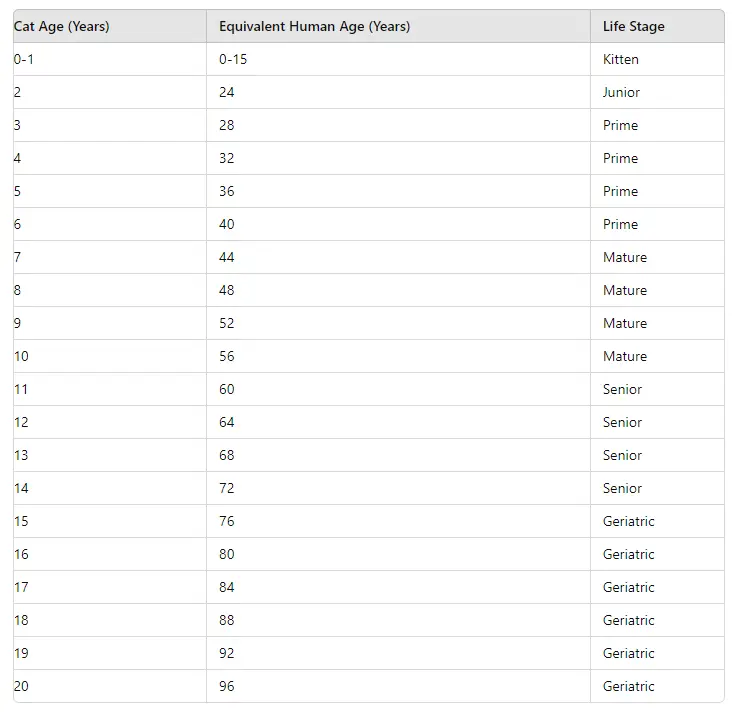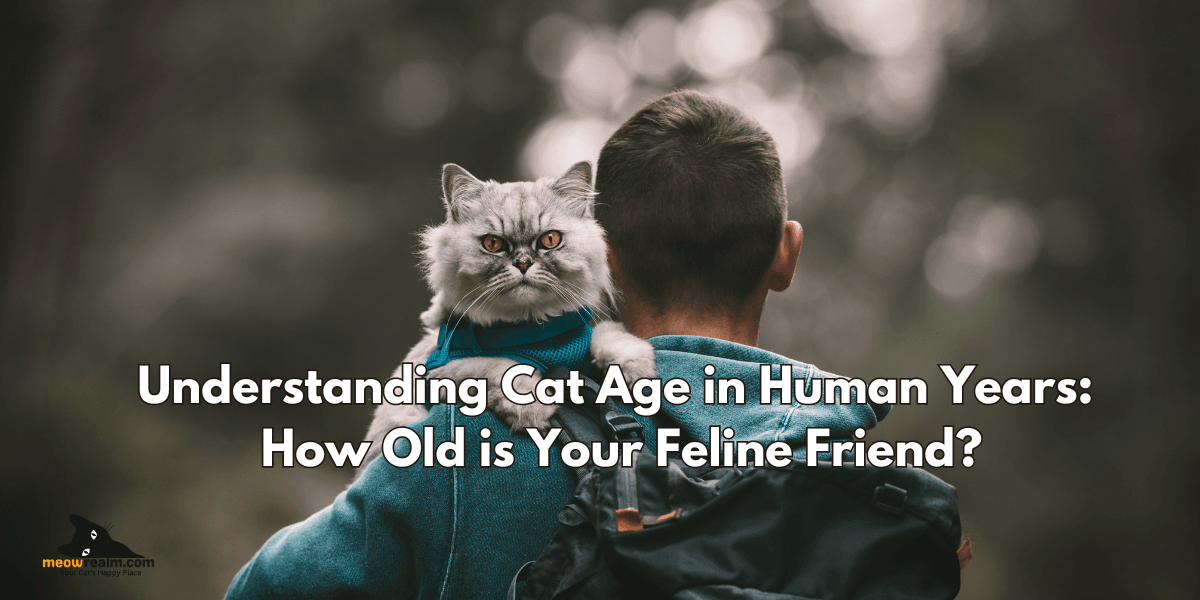As cat owners, we often wonder how old our feline friends are in human years. Understanding cat age in human years can help us better care for our pets, from recognizing their life stage needs to anticipating age-related health concerns. In this guide, we’ll explore how to calculate your cat’s age in human years, the stages of a cat’s life, and what each stage means for their health and well-being.
How to Calculate Cat Age in Human Years
The concept of converting cat age into human years isn’t as straightforward as simply multiplying by a single number. Cats age rapidly in their first few years, and then the aging process slows down. The general guideline is:
- The First Two Years: The first year of a cat’s life is roughly equivalent to 15 human years, and the second year adds about 9 more human years.
- After Two Years: Each additional year of a cat’s life is roughly equal to 4 human years.
For example, if your cat is 5 years old, they would be approximately 36 in human years (15+9+(3×4)).
The Life Stages of a Cat – cat age in human years
Understanding cat age in human years helps us better grasp the different life stages of our cats and what they need at each phase.
Kitten (0-6 months)
In human years, a kitten’s first six months are roughly equivalent to a child’s first ten years. During this stage, your cat will grow rapidly, developing their motor skills and social behaviors. This is a critical time for socialization, play, and introducing them to various stimuli.
Junior (7 months-2 years)
In human years, a cat in the junior stage is comparable to a human teenager. This is when your cat reaches full size, and their personality becomes more defined. It’s also when they may exhibit high energy levels and curiosity, much like a human adolescent.
Prime (3-6 years)
During the prime stage, a cat is in the equivalent of their twenties and thirties in human years. They are at their healthiest and most active, with a well-established routine and personality. This is the best time to reinforce healthy habits, such as proper diet and regular exercise.
Mature (7-10 years)
In human years, a mature cat is comparable to a person in their forties and fifties. During this stage, you may start to notice subtle changes in your cat’s behavior and physical condition. Regular vet check-ups become even more important to catch any early signs of aging-related health issues.
Senior (11-14 years)
A senior cat corresponds to a human in their sixties and seventies. At this stage, cats often slow down, becoming less active and possibly more prone to health issues such as arthritis or dental problems. Ensuring your cat remains comfortable and receives appropriate medical care is crucial.
Geriatric (15 years and older)
A geriatric cat is akin to a human in their eighties or nineties. They may require special accommodations, such as softer bedding, easier access to litter boxes, and more frequent health check-ups. Despite their advanced age, many cats in this stage can still enjoy a good quality of life with proper care.
Why Understanding Cat Age in Human Years Matters
Knowing your cat’s age in human years can help you better anticipate their needs and provide the appropriate care. Here are some key reasons why understanding cat age in human years is important:
Tailoring Nutrition cat age in human years
As cats age, their nutritional needs change. Kittens require more protein and calories to support their rapid growth, while senior cats may need a diet that supports joint health and maintains a healthy weight. By understanding your cat’s age in human years, you can adjust their diet accordingly to support their health at every stage.
Recognizing Age-Related Health Issues
Different life stages come with different health risks. For example, younger cats are more prone to infectious diseases and parasites, while older cats are at higher risk for conditions like kidney disease, diabetes, and hyperthyroidism. Regular veterinary visits and age-appropriate health screenings can help catch these issues early, improving your cat’s quality of life.
Adjusting Your Cat’s Environment
As your cat ages, you may need to make adjustments to their environment to keep them comfortable. Older cats may benefit from softer bedding, ramps to help them reach their favorite spots, and litter boxes with lower sides for easier access. Understanding your cat’s age in human years can help you anticipate these needs and make the necessary changes.
Myths About Cat Age in Human Years
There are several myths about cat age in human years, one of the most common being the “one cat year equals seven human years” rule. While this rule is easy to remember, it oversimplifies the complex aging process of cats. As we’ve seen, cats age much more rapidly in their first two years, and the aging process slows down as they get older.
Another myth is that indoor cats age more slowly than outdoor cats. While it’s true that indoor cats tend to live longer due to a safer environment, their aging process in terms of human years is the same. The key difference is that indoor cats often enjoy a longer lifespan, allowing them to reach the senior and geriatric stages that outdoor cats may not.
Understanding cat age in human years offers valuable insights into your cat’s life stage and helps you provide the best care possible. From adjusting their diet to recognizing potential health issues, knowing how old your cat is in human years can make a significant difference in their well-being. By keeping these age-related considerations in mind, you can ensure that your feline friend enjoys a long, healthy, and happy life.
Here’s a simple tableau to help visualize the conversion of cat age to human years:


